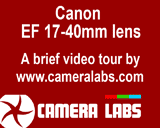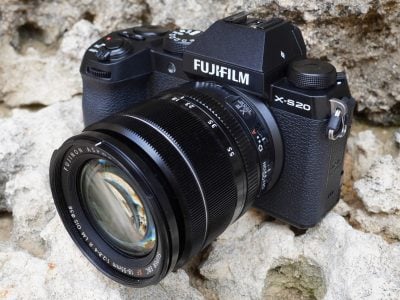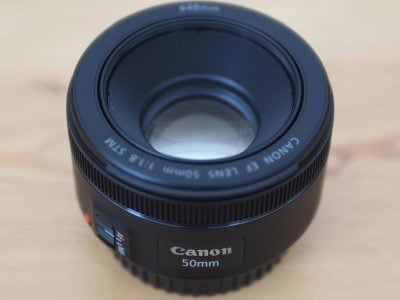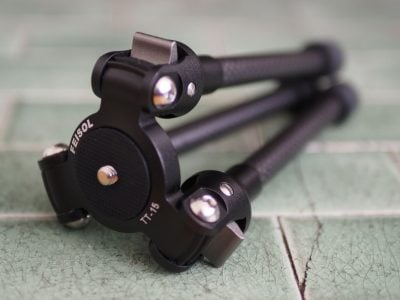Canon EF 17-40mm f/4L USM lens, (tested with cropped-frame APS-C body)
-
-
Written by Gordon Laing
Quality
Canon EF 17-40mm f/4L USM resolution using Canon EOS 400D / XTi
Canon 17-40mm results continued…
Outdoor / Resolution / Corner sharpness / Fringe and macro / Geometry / Vignetting
 |
To measure and compare the resolving power of each lens using the Canon EOS 400D, we photographed the Enhanced Digital Camera Resolution Chart with each lens set to a focal length of 35mm and an aperture of f8. The 400D was set to Aperture Priority, Large Fine JPEG mode and its Standard Picture Style. All four lenses were tested within moments of each other under identical lighting conditions. The crops are taken from the original images, saved as High Quality JPEGs in Photoshop CS2 and presented here at 100%. Each number represents 100 lines per picture height (lpph), so a figure of 20 means a resolution of 2000 lpph. |
The best result in this particular test came from the EF 17-40 and EF-S 17-85 lenses which both resolved 2150 lpph horizontally and vertically. This is an impressive result for the 17-85mm, as the 17-40mm is a premium ‘L’ model and also designed for full-frame use. The budget EF-S 18-55mm kit lens unsurprisingly resolves the least detail of the four, with 2000 and 2100 lpph of horizontal and vertical resolution respectively. Interestingly the next step-up in resolving power comes from the priciest of the group: the EF-S 17-55 f/2.8 lens, which resolved 2050 and 2100 lpph horizontally and vertically respectively. It’s also interesting to note the lenses with the highest resolving power also exhibited higher contrast and sharpness in this test; the 17-55mm and especially the 18-55mm exhibited noticeably lower sharpness and contrast here, and we should reconfirm all four lenses were tested during the same session, with identical lighting conditions and camera settings. To compare how the same lenses performed on an EOS 350D / Rebel XT, see the resolution results page of our Canon 17-55mm review. |
Canon EF 17-40mm f/4.0L USM |
Canon EF-S 17-85mm f/4-5.6 IS USM | |
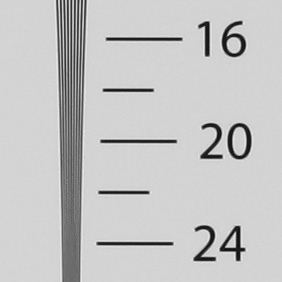 | 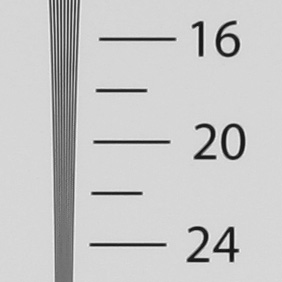 | |
2150 lpph, 17-40mm at 35mm, f8, 100 ISO |
2150 lpph, 17-85mm at 35mm, f8, 100 ISO | |
Canon EF-S 18-55mm f/3.5-5.6 |
Canon EF-S 17-55mm f/2.8 IS USM | |
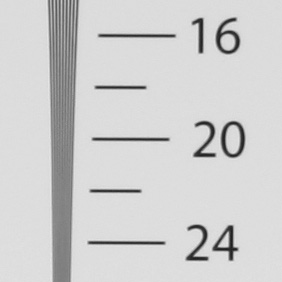 | 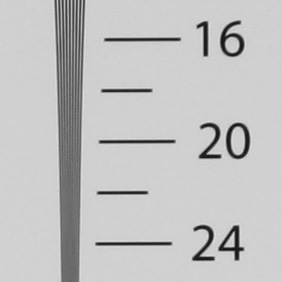 | |
2000 lpph, 18-55mm at 35mm, f8, 100 ISO |
2050 lpph, 17-55mm at 35mm, f8, 100 ISO |
Canon EF 17-40mm f/4.0L USM |
Canon EF-S 17-85mm f/4-5.6 IS USM | |
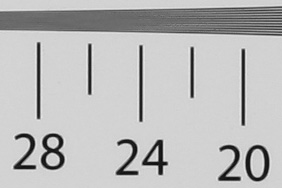 | 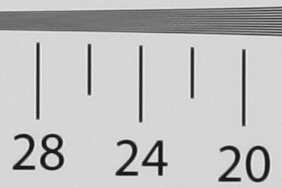 | |
2150 lpph, 17-40mm at 35mm, f8, 100 ISO |
2150 lpph, 17-85mm at 35mm, f8, 100 ISO | |
Canon EF-S 18-55mm f/3.5-5.6 |
Canon EF-S 17-55mm f/2.8 IS USM | |
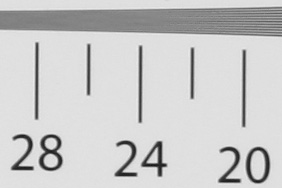 | 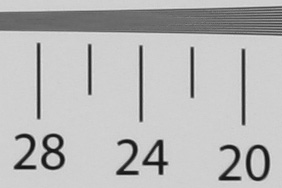 | |
2100 lpph, 18-55mm at 35mm, f8, 100 ISO |
2100 lpph, 17-55mm at 35mm, f8, 100 ISO |
Canon EF 17-40mm f/4L USM corner sharpness using Canon EOS 400D / XTi
Canon 17-40mm results continued…
Outdoor / Resolution / Corner sharpness / Fringe and macro / Geometry / Vignetting
|
To measure and compare the corner sharpness of each lens using the Canon EOS 400D, we photographed the Enhanced Digital Camera Resolution Chart with each lens at its shortest and longest focal lengths using various aperture settings. The 400D was set to Large Fine JPEG mode and its Standard Picture Style. All four lenses were tested within moments of each other under identical lighting conditions. The crops are taken from the lower left corner of the chart and presented here at 100%. The wide angle crops show a slightly larger area of the chart because the minimum focusing distances forced us to shoot from a little further away. No crops have been resized. |
|
Zoomed-out to wide angle, the EF 17-40mm performs well in the corners, although it should do being corrected for a much larger full-frame body; that said, it’s far from perfect on a cropped body and here exhibits a little coloured fringing and a drop in contrast at smaller apertures. Zoomed-into its longest focal length and with the aperture wide open, the EF 17-40mm is actually quite soft in the corners – this is a bit of a disappointment considering again it should be corrected for a much larger full-frame body. That said we found this lens performs much better when zoomed-out than it does zoomed-in, and as the results below show, the corner sharpness can be greatly improved by closing the aperture a little. |
Canon EF 17-40mm f/4.0L USM |
Canon EF-S 17-85mm f/4-5.6 IS USM |
Canon EF-S 18-55mm f/3.5-5.6 |
Canon EF-S 17-55mm f/2.8 IS USM | |||
 |  |  | 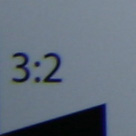 | |||
f2.8 not available |
f2.8 not available |
f2.8 not available |
17-55mm EF-S at 17mm f2.8 | |||
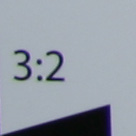 | 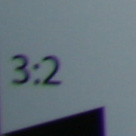 | 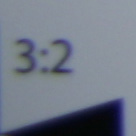 | 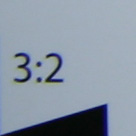 | |||
17-40mm EF L at 17mm f4 |
17-85mm EF-S at 17mm f4 |
18-55mm EF-S at 18mm f3.5 |
17-55mm EF-S at 17mm f4 | |||
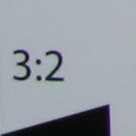 | 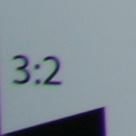 | 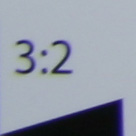 | 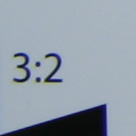 | |||
17-40mm EF L at 17mm f8 |
17-85mm EF-S at 17mm f8 |
18-55mm EF-S at 18mm f8 |
17-55mm EF-S at 17mm f8 | |||
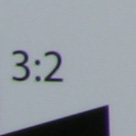 | 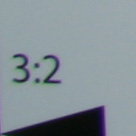 | 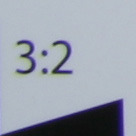 | 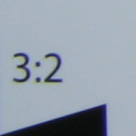 | |||
17-40mm EF L at 17mm f16 |
17-85mm EF-S at 17mm f16 |
18-55mm EF-S at 18mm at f16 |
17-55mm EF-S at 17mm f16 | |||
Canon EF 17-40mm f/4.0L USM |
Canon EF-S 17-85mm f/4-5.6 IS USM |
Canon EF-S 18-55mm f/3.5-5.6 |
Canon EF-S 17-55mm f/2.8 IS USM | |||
 |  |  | 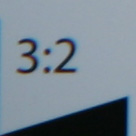 | |||
f2.8 not available |
f2.8 not available |
f2.8 not available |
17-55mm EF-S at 55mm f2.8 | |||
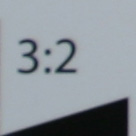 | 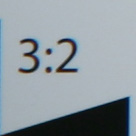 | 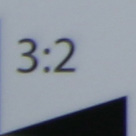 | 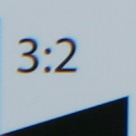 | |||
17-40mm EF L at 40mm f4 |
17-85mm EF-S at 85mm f5.6 |
18-55mm EF-S at 55mm f5-6 |
17-55mm EF-S at 55mm f5.6 | |||
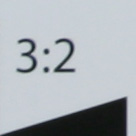 | 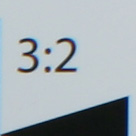 | 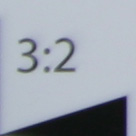 | 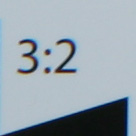 | |||
17-40mm EF L at 40mm f8 |
17-85mm EF-S at 85mm f8 |
18-55mm EF-S at 55mm f8 |
17-55mm EF-S at 55mm f8 | |||
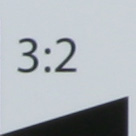 | 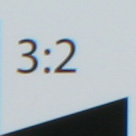 | 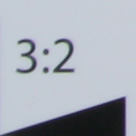 | 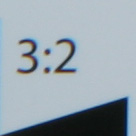 | |||
17-40mm EF L at 40mm f16 |
17-85mm EF-S at 85mm f16 |
18-55mm EF-S at 55mm f16 |
17-55mm EF-S at 55mm f16 |
Canon EF 17-40mm f/4L USM purple fringing using Canon EOS 400D / XTi
Canon 17-40mm results continued…
Outdoor / Resolution / Corner sharpness / Fringe and macro / Geometry / Vignetting
 |
To measure and compare purple fringing caused by chromatic aberrations and sensor blooming, we photographed a high contrast test chart using each lens set to its shortest and longest focal lengths with the aperture wide open. The crops are taken from the upper left corner of the chart and presented here at 100%. All four lenses perform similarly here, exhibiting some coloured fringing in their corners when zoomed-out, but little when zoomed-in. |
Canon EF 17-40mm f/4.0L USM |
Canon EF-S 17-85mm f/4-5.6 IS USM |
Canon EF-S 18-55mm f/3.5-5.6 |
Canon EF-S 17-55mm f/2.8 IS USM | |||
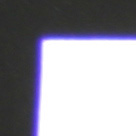 | 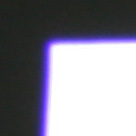 | 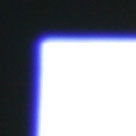 | 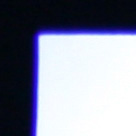 | |||
17-40mm EF L at 17mm f4 |
17-85mm EF-S at 17mm f4.0 |
18-55mm EF-S at 18mm f3.5 |
17-55mm EF-S at 17mm f2.8 | |||
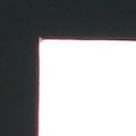 | 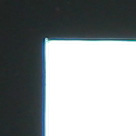 | 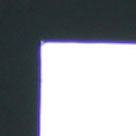 | 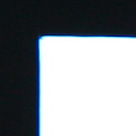 | |||
17-40mm EF L at 40mm f4 |
17-85mm EF-S at 85mm f5.6 |
18-55mm EF-S at 55mm f5.6 |
17-55mm EF-S at 55mm f2.8 |
Canon EF 17-40mm f/4L USM macro using Canon EOS 400D / XTi
To measure and compare macro performance we photographed a chart using each lens at a focal length and distance which delivered the maximum possible reproduction. The dark lines are 10mm apart and the result is not cropped. Smaller areas are preferred in this test. While none of the four can be described as macro lenses, the best result is actually enjoyed by the budget EF-S 18-55mm, delivering a maximum area of 66x44mm. Next is the EF 17-40mm, followed by the EF-S 17-85mm and finally the EF-S 17-55mm. It’s interesting to note the budget kit lens delivers an area four times smaller than the EF-S 17-55mm at its closest focusing distance. |
Canon EF 17-40mm f/4.0L USM |
Canon EF-S 17-85mm f/4-5.6 IS USM |
Canon EF-S 18-55mm f/3.5-5.6 |
Canon EF-S 17-55mm f/2.8 IS USM | |||
 |  |  |  | |||
17-40mm EF L at 40mm f8 Max area of 92x62mm |
17-85mm EF-S at 85mm f8 Max area of 104x70mm |
18-55mm EF-S at 55mm f8 Max area of 66x44mm |
17-55mm EF-S at 55mm f8 Max area of 124x82mm |
Canon EF 17-40mm f/4L USM wide-angle geometry
Canon 17-40mm results continued…
Outdoor / Resolution / Corner sharpness / Fringe and macro / Geometry / Vignetting
|
using Canon EOS 400D / XTi |
To measure and compare wide angle geometric distortion, we photographed a test chart consisting of a grid pattern with each lens set to its shortest focal length and an aperture of f8. The images were then analysed with Imatest using 5th Order line calculation and the full areas presented here at a reduced resolution.
 The lowest geometric distortion at wide angle comes from the EF-S 17-55mm, although the EF 17-40mm scores essentially the same result here. The budget EF-S 18-55mm kit lens comes next, but falling behind with the worst result here is the EF-S 17-85mm, which exhibits quite noticeable geometric distortion when zoomed-out. |
Canon EF 17-40mm f/4.0L USM |
Canon EF-S 17-85mm f/4-5.6 IS USM |
Canon EF-S 18-55mm f/3.5-5.6 |
Canon EF-S 17-55mm f/2.8 IS USM | |||
 |  |  | ||||
17-40mm EF L at 17mm f8 Distortion: 2.9% barrel |
17-85mm EF-S at 17mm f8 Distortion: 5.71% barrel |
18-55mm EF-S at 18mm f8 Distortion: 3.35% barrel |
17-55mm EF-S at 17mm f8 Distortion: 2.87% barrel |
Canon EF 17-40mm f/4L USM telephoto geometry using Canon EOS 400D / XTi
To measure and compare telephoto geometric distortion, we photographed a test chart consisting of a grid pattern with each lens set to its longest focal length and an aperture of f8. The images were then analysed with Imatest using 5th Order line calculation and the full areas presented here at a reduced resolution.
 The best result again comes from the EF 17-40mm, which again is expected because it’s corrected for a more demanding full-frame body. Interestingly the budget kit lens comes second here, exhibiting noticeably lower geometric distortion when zoomed-in than the other two EF-S lenses. |
Canon EF 17-40mm f/4.0L USM |
Canon EF-S 17-85mm f/4-5.6 IS USM |
Canon EF-S 18-55mm f/3.5-5.6 |
Canon EF-S 17-55mm f/2.8 IS USM | |||
 |  |  | ||||
17-40mm EF L at 40mm f8 Distortion: 0.187% pincushion |
17-85mm EF-S at 85mm f8 Distortion: 0.967% pincushion |
18-55mm EF-S at 55mm f8 Distortion: 0.389% pincushion |
17-55mm EF-S at 55mm f8 Distortion: 1.09% pincushion |
Canon EF 17-40mm f/4L USM wide-angle uniformity
Canon 17-40mm results
Outdoor / Resolution / Corner sharpness / Fringe and macro / Geometry / Vignetting
|
using Canon EOS 400D / XTi |
|
To measure and compare light fall-off at wide angle, we photographed a white target using a highly diffused custom filter with each lens at its shortest focal length and the aperture wide open. The images were then analysed with Imatest and the full areas presented here at a reduced resolution. Bigger percentages are better. As with the previous Geometric distortion results, the EF 17-40mm performs best here since it’s corrected for a larger and more demanding full-frame body. Interestingly the second best result actually comes from the budget EF-S 18-55mm, followed by the EF-S 17-85mm and finally the EF-S 17-55mm, which loses just over half of its brightness in the extreme corners. To be fair, the EF-S 17-55mm offers an f2.8 aperture throughout its range, but if light fall-off and dark corners really bother you, the EF-S 17-55 and EF-S 17-85 are best avoided at wide angle. Note: to see how the EF 17-40mm performs on a full-frame body in this respect, check the uniformity results of our Canon 24-105mm review. |
Canon EF 17-40mm f/4.0L USM |
Canon EF-S 17-85mm f/4-5.6 IS USM |
Canon EF-S 18-55mm f/3.5-5.6 |
Canon EF-S 17-55mm f/2.8 IS USM | |||
 |  |  |  | |||
17-40mm EF L at 17mm f4 Mean corner fall-off: 79.4% |
17-85mm EF-S at 17mm f4 Mean corner fall-off: 57.8% |
18-55mm EF-S at 18mm f3.5 Mean corner fall-off: 68.8% |
17-55mm EF-S at 17mm f2.8 Mean corner fall-off: 46.8% |
Canon EF 17-40mm f/4L USM telephoto uniformity using Canon EOS 400D / XTi
To measure and compare light fall-off at telephoto, we photographed a white target using a highly diffused custom filter with each lens at its longest focal length and the aperture wide open. The images were then analysed with Imatest and the full areas presented here at a reduced resolution. Bigger percentages are better. Our last optical result actually sees the budget EF-S 18-55mm perform best of all, although the EF 17-40mm is right behind it; this is still a great result for the EF-S 18-55mm though, as the EF 17-40mm is an ‘L’ model that’s also designed for a full-frame body. Following the wide angle results above, the EF-S 17-85mm comes third and the EF-S 17-55mm last in this test. Again you have to take the latter’s f2.8 aperture into account, but either way, images taken with both of these lenses can noticeably darken in the corners. Note: to see how the EF 17-40mm performs on a full-frame body in this respect, check the uniformity results of our Canon 24-105mm review. |
Canon EF 17-40mm f/4.0L USM |
Canon EF-S 17-85mm f/4-5.6 IS USM |
Canon EF-S 18-55mm f/3.5-5.6 |
Canon EF-S 17-55mm f/2.8 IS USM | |||
 |  |  |  | |||
17-40mm EF L at 40mm f4 Mean corner fall-off: 82.2% |
17-85mm EF-S at 85mm f5.6 Mean corner fall-off: 77.5% |
18-55mm EF-S at 55mm f5.6 Mean corner fall-off: 83.8% |
17-55mm EF-S at 55mm f2.8 Mean corner fall-off: 60.8% |
